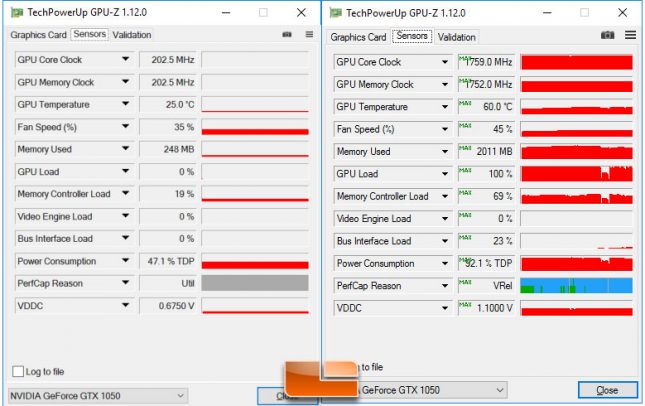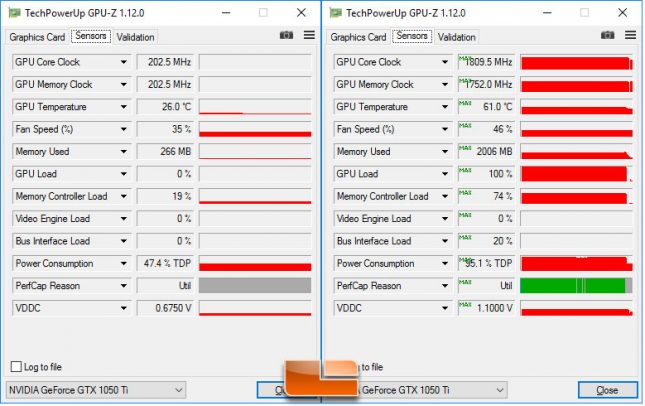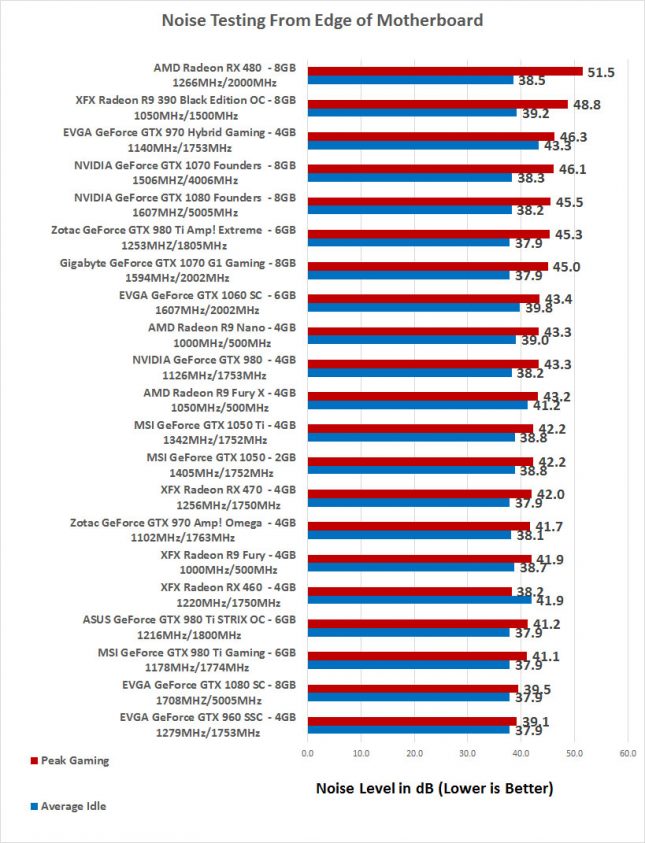MSI GeForce GTX 1050 Ti 4GB and GeForce GTX 1050 2GB Video Card Review
Temperature & Noise Testing
The gaming performance on a graphics card is the most important factor in buying a card, but you also need to be concerned about the noise, temperature and power consumption numbers.
MSI GeForce GTX 1050 2GB Idle and Load Temps:
MSI GeForce GTX 1050 Ti 4GB Idle and Load Temps:
When it comes to temperatures both of the cards we great despite the tiny heat sinks! We were seeing 25C idle and 60C on the MSI GeForce GTX 1050 2GB card and just 1C higher on the MSI GeForce GTX 1050 Ti 4GB card. Notice that the MSI GeForce GTX 1050 Ti was boosting up to 1809 MHz at times, which was higher than the MSI GeForce GTX 1050 that topped out at 1759MHz. We found this a little odd as the MSI GeForce GTX 1050 has a higher base and boost clock on paper.
Sound Testing
We test noise levels with an Extech sound level meter that has 1.5dB accuracy that meets Type 2 standards. This meter ranges from 35dB to 90dB on the low measurement range, which is perfect for us as our test room usually averages around 36dB. We measure the sound level two inches above the corner of the motherboard with ‘A’ frequency weighting. The microphone wind cover is used to make sure no wind is blowing across the microphone, which would seriously throw off the data.
The single fan cooler design on the MSI GeForce GTX 1050 2GB OC and the MSI GeForce GTX 1050 Ti 4GB OC is pretty basic, but it isn’t too loud. We did notice that one of the fans on our cards made a ticking noise at some RPM’s, so hopefully our card just has a bad fan and that this isn’t an issue with the entire series.
** The AMD Radeon R9 Fury X reference card that we are using was the original model with a loud water pump that whines. AMD changed the pump design before the cards hit the retail market, but wasn’t willing to replace ours. We expect retail cards to perform quieter for this and hopefully AMD will send us a replacement card for proper noise testing. **



